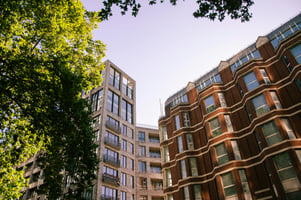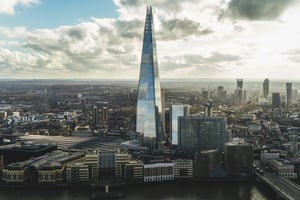Urban impact refers to the different ways that urbanisation and the expansion of cities impact...
Achieving Sustainable Development: Understanding Noise, Dust, and Light Pollution in Urban Spaces

Although urban living offers a lot of convenience and excitement, it does come with a cost: noise, dust, and light pollution. These pollutants are often overlooked in the pursuit of sustainable development, but they significantly impact our well-being and the environment.
This article will dive into each pollutant, address ways to tackle the problem and highlight the importance of controlling and reducing these pollutants to improve our urban spaces.
Understanding Noise Pollution in Urban Spaces
Noise pollution is a common problem in urban areas, especially with traffic, construction, and other human activities adding to the constant mix of sounds. It has been scientifically proven that constant exposure to high noise levels can have negative consequences for both our physical and mental health. These consequences include sleep disturbances, stress, hearing loss, and cardiovascular diseases.
There are various ways to tackle noise pollution in urban environments. For example, certain traffic management measures, like the creation of low-traffic zones and restrictions on heavy vehicles, can help reduce noise pollution. Additionally, urban planning should prioritise green spaces and quiet locations within cities, and transportation systems should be developed and maintained with this in mind.
On an individual level, we can work on being more conscious of the noise we generate and focus on reducing our noise levels while encouraging others to do the same.
Tackling Dust Pollution in Urban Environments
Dust pollution is another common problem in urban areas; it comes from various sources such as road traffic, construction sites, and industrial activities. Long-term exposure to high levels of dust particles can lead to eye irritation, respiratory issues, and various other health problems. This pollutant also contributes to poor air quality, the degradation of ecosystems, and various other environmental consequences.
One way of tackling dust pollution is through dust control measures on construction sites, such as water sprayers and various enclosures. This also involves monitoring that sites are complying with these requirements. On top of this, regularly cleaning and maintaining the roads can also reduce the dust that is generated by traffic, especially in places where there are loads of vehicles.
Urban greening is another way of tackling dust pollution. Planting numerous trees and creating green spaces in cities can help filter dust particles from the air, improve air quality, and come with various other benefits like carbon sequestration and temperature regulation. Promoting more sustainable transportation options can also help reduce dust emissions from vehicles.
On an individual level, we can take various measures to protect ourselves from dust pollution, such as wearing masks when in high-dust environments and maintaining good indoor air quality through regular cleaning and ventilation. We can also stand for and advocate for initiatives and policies that aim to reduce the amount of dust pollution in our urban spaces.
Addressing Light Pollution in Urban Areas
Light pollution, which is defined by excessive artificial lighting at night, has long been a concern in urban spaces all over the world. Light pollution has negative impacts on human health, like depression and sleep disturbances, and increases the risk of cancer. Not only does it affect humans, but it also disrupts the natural rhythms of nocturnal creatures.
In order to address light pollution, architects, city planners, and engineers need to put a focus on designing and implementing efficient and safe outdoor lighting. This could include shielded or fall-cutoff light fixtures, as these minimise the emission of light into neighbouring houses and into the sky. They should also prioritise energy-efficient lighting, like LED technology, for example, as not only do they reduce light pollution, but they also reduce greenhouse gas emissions and conserve energy.
Get in touch with our team at Urban Thinking to find effective solutions to the problems posed by dust, noise, and light pollution. Especially those coming from construction projects in the built environment.




Get in touch with Urban Thinking